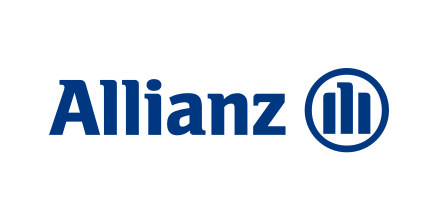The trust invests in companies that use innovative technology to gain a competitive advantage in their industry
Michael Seidenberg took over as the trust's lead manager in July 2022 but has a lot of experience, having been involved in managing technology funds since 2001.
Performance has been exceptional over the last 12 months, although this follows two more challenging years.
How it fits in a portfolio
Allianz Technology Trust aims to deliver long-term capital growth by investing in technology companies from around the world. The managers favour those that are innovating to gain a competitive advantage in their industry, addressing global trends or improving existing technology. They mainly invest in large and medium-sized technology companies but have the flexibility to invest in higher-risk smaller companies too.
Investing in the trust could help boost long-term growth potential but this is a specialist area so adds risk. We think funds and investment trusts investing in a specific sector should usually only form a small part of a well-diversified investment portfolio. Investors in investment trusts should be aware the trust can trade at a discount or premium to net asset value (NAV).
Manager
Michael Seidenberg became the lead manager of the trust in July 2022, having been a part of the Global Technology team for almost 15 years. He took over from Walter Price and Huachen Chen who retired. Seidenberg was recruited by Price in 2009, and worked closely with him from then onwards, so was a natural choice as successor to manage the trust.
Over his career, Seidenberg has gained a lot of experience across the technology industry. He began working in the software industry in 1996 and started his investing career with Citadel Investment Group in 2001. He's covered most technology sectors over his tenure.
When Price and Chen retired, it meant that the trust and wider technology team lost a lot of experience. They worked together for over 30 years covering every aspect of technology over that time.
That said, the team surrounding Seidenberg remains exceptionally strong. The four team members assigned to help Seidenberg with the trust have a total combined experience of 93 years – one of the most experienced teams in the industry. Erik Swords was recently named co-manager on the trust. He has 24 years of experience and is the Global Head of Technology.
Process
Seidenberg continues to apply the same tried and tested investment approach which has been used for many years. The team scour the technology universe for high-quality companies they believe have the potential to ride major trends and be successful over the long term. This means they prefer companies with certain traits such as high-quality management teams and healthy balance sheets. Companies must also exhibit dominance in their respective industry, strong pricing power and sustainable earnings growth over time.
Placing an emphasis on these types of characteristics can offer opportunities in different market environments. Because of this the companies they invest in typically fit into three categories:
High growth innovators - emerging or transformative areas of tech, offering higher growth potential but higher risk.
GARP (growth at a reasonable price) - established companies that have potential to grow but where the shares aren't overpriced.
Cyclical growth - companies that are sensitive to economic conditions and could grow as the economy grows.
The trust currently invests almost 90% of its assets in technology companies listed on the US stock exchange. The team find a range of opportunities here, including some of the largest US technology companies such as NVIDIA, Apple, Microsoft, Alphabet and Meta Platforms (previously Facebook). It is important to point out that whilst these companies are all headquartered in the US, they make their money globally and their fortunes are not exclusively tied to the US economy.
The rest of the trust is diversified across other countries, including the UK and Europe, and has some small investments in Emerging Markets, which are higher risk than developed markets.
The team invest in an array of technology sectors, including semiconductors, software and hardware. They also find opportunities in some less obvious areas, where technology is nonetheless key, such as communications and automotives. Despite the changes to the team over the last few years, the manager continues to run the trust using the same process that has always been used, so the number of changes to the trust's investments has been limited.
The top holdings in the fund include Microsoft, NVIDIA, Apple, Alphabet and Meta Platforms. The top ten stocks make up 47.3% of the portfolio. Although, portfolio diversification does not ensure against loss.
The manager has the flexibility to use gearing and derivatives which can magnify any gains or losses. Investors should be aware that if used, each increases risk. Although they have this flexibility, to date, the managers have not seen the need to take on the additional risk.
Culture
The trust was formed in December 1995 and was relaunched with a new team at the helm in 2007 by AllianzGI. The board appointed AllianzGI to oversee the trust based on their experience and in-depth expertise of investment trust management. The management team has experience across the industry and is committed for the long term.
In July 2022, AllianzGI’s US investment operations was sold to Voya Investment Management. Seidenberg and the Allianz board members believe this is a positive partnership that will help bolster the available resources each team has access to. The culture is also similar to Allianz, so the transition has been relatively smooth so far.
As part of the partnership, Grassroots Research, which used to be a division within AllianzGI, is now owned by Voya. This remains an available resource for Seidenberg and his team to draw on for idea generation. Grassroots Research is a global network of journalists, field investigators and industry contacts that gather additional research. The network is able to talk to companies and industry experts, gaining valuable market insights for the team.
ESG integration
Environmental, social and governance (ESG) factors have become increasingly prominent in recent years and form an important part of Allianz's DNA. The main area of focus is governance within technology companies, specifically the strength and makeup of the board. Allianz can hold the companies’ management teams to account but also help influence and improve their behaviours, which Allianz believes can lead to more sustainable long-term performance.
The managers of this trust are still able to draw on the ESG work of Allianz, which means they continue to benefit from having a separate ESG research team and are less reliant on third party data. They also now benefit from an increase in available ESG resource following the partnership with Voya. Having this increased resource should be beneficial.
Cost
The ongoing charge, over the trust's financial year to 31 December 2023, remained steady at 0.70%. Investors should refer to the latest annual reports and accounts and Key Information Document for details of the risks and charging structure.
If held in a SIPP or ISA the HL platform fee of 0.45% (capped at £200 p.a. for a SIPP and £45 for an ISA) per annum also applies. Our platform fee doesn't apply if held in a Fund and Share Account or a Junior ISA. As investment trusts trade like shares, both a buy and sell instruction will be subject to our share dealing charges within any HL account except online deals in a Junior ISA.
Performance
Over the long term the trust has performed well, rising 479.20%* over the ten years to the end of December 2023. Returns have been quite variable though and remember Seidenberg has only been lead manager since July 2022, though he has been part of the team longer than that. Over the trust’s financial year to the end of December 2023, its net asset value rose by 46.40% and its share price rose by 44.50%. This was marginally behind the trust’s global technology benchmark. However, the previous year the fund had fallen in value by 33.60%. This level of volatility is not unusual for technology stocks. Remember past performance is not a guide to the future. All investments fall and rise in value so you may get back less than you invest.
As at the trust’s financial year end, it was trading at a discount of 10.30%. This means that the price of the trust was 10.30% below the net asset value of its investments. This compares to a discount of 9.10% at the end of the previous financial year (31/12/2022). To put this into context, over the last ten years (to the end of April 2024) the trust has traded on an average month-end discount of 5.12%.
After a cautious start, 2023 was a good year for global stock markets, led by some of the biggest technology stocks. The so-called ‘Magnificent Seven’ – Amazon, Alphabet, Apple, Meta Platforms, Microsoft, NVIDIA and Tesla – led the market, as excitement over the potential that artificial intelligence technology could have in a whole range of different applications.
Whilst this sounds like a great thing for a technology trust, and in many ways it is, the dominance of these seven stocks in the index meant that it was hard for this, or indeed any, trust to beat it. The trust held all of these names over the year, and benefitted from their strong returns. Four of them (Apple, Alphabet, Microsoft and NVIDIA) they held in smaller amounts than the benchmark, so the trust did not benefit as much from their performance as the benchmark did. This was one of the reasons for underperforming the benchmark.
The managers also held a number of smaller companies which they like for their long-term growth potential. Whilst many of these underperformed the Magnificent Seven giants, they still produced positive returns. The managers continue to believe they can deliver strong long-term growth.
Many of the cybersecurity names in the trust performed well, with demand supported by geopolitical tensions. The managers have been cautious on the Chinese market for a while, and not investing in the big Chinese tech stocks proved to be a good move for performance.
Some of the weaker names in the trust included JD.com, the only Chinese company in the trust, Okta and Paycom Software. Okta suffered some operational problems, whilst Paycom Software reported disappointing earnings.
Annual percentage growth
Apr 2019 - Apr 2020 | Apr 2020 - Apr 2021 | Apr 2021 - Apr 2022 | Apr 2022 - Apr 2023 | Apr 2023 - Apr 2024 | |
|---|---|---|---|---|---|
14.02 | 60.16 | -15.36 | -11.24 | 53.78 |


